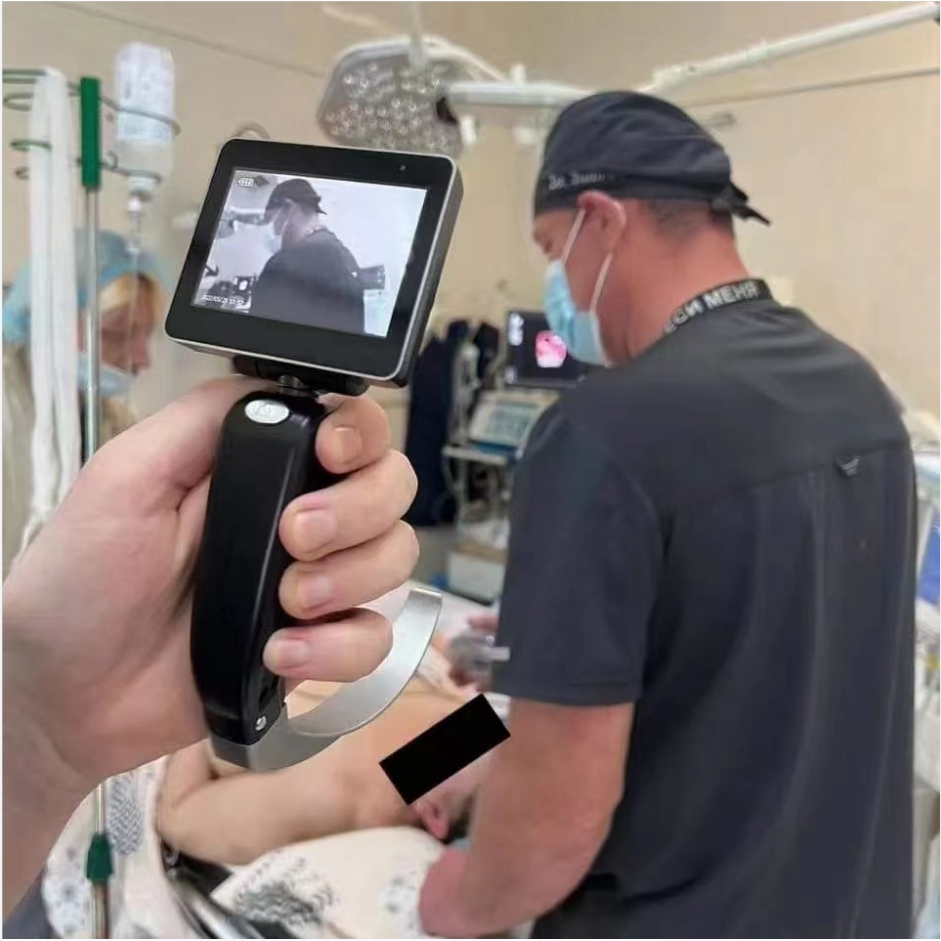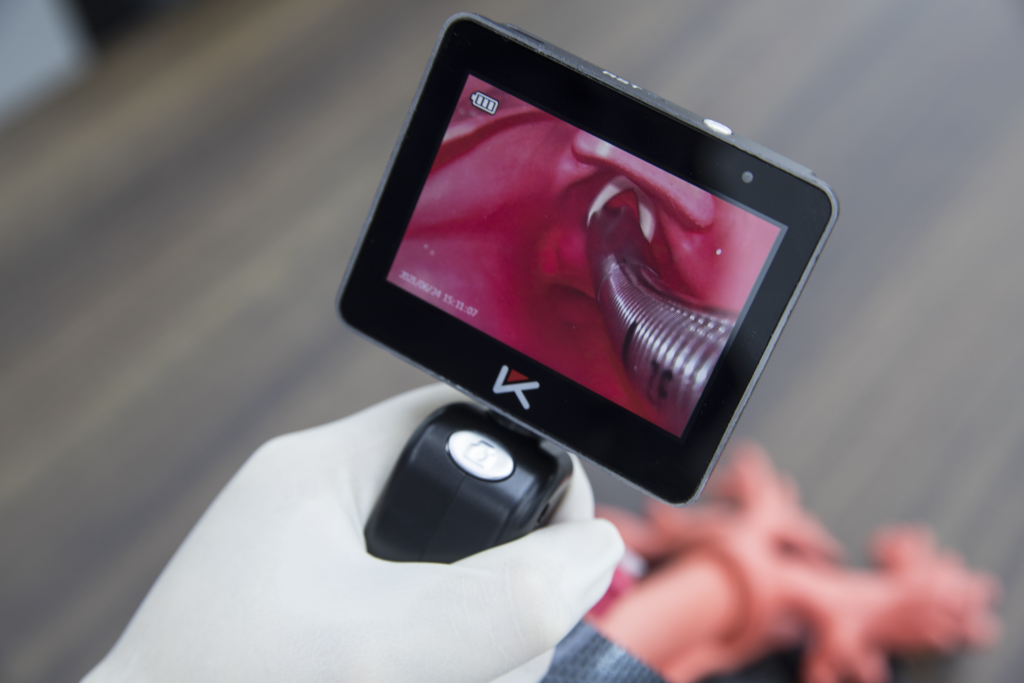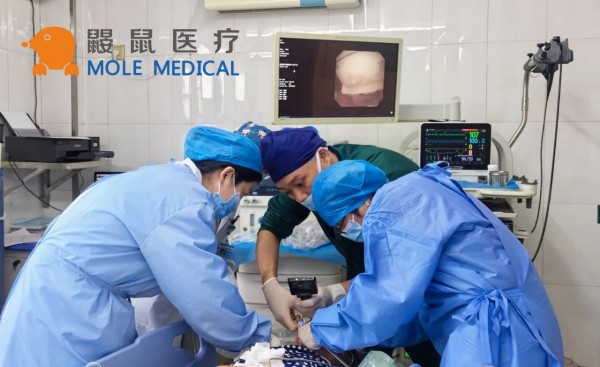Laryngoscopy Images Explained – Medical Insights
Dec 23, 2023
Laryngoscopy is an important diagnostic tool used by healthcare professionals to examine the larynx visually. By visually exploring the larynx, healthcare professionals can identify abnormalities and conditions that can inform the course of treatment. Laryngoscopy images play a crucial role in ensuring that diagnoses are accurate and treatment plans are appropriate.
Key Takeaways
- Laryngoscopy is a critical tool for visually detecting conditions in the larynx.
- Laryngoscopy images provide detailed insights that inform diagnoses and treatment plans.
- The diagnostic value of laryngoscopy images is essential for determining appropriate treatment options.
- Patient education can be enhanced by using laryngoscopy images to explain conditions and treatments.
- Laryngoscopy images are used in various settings, including otolaryngology clinics and surgical procedures.
Understanding Laryngoscopy
Laryngoscopy is an essential procedure that healthcare professionals use to visually examine the larynx to identify any abnormalities or conditions. This procedure is particularly crucial in the diagnosis and treatment of voice disorders and swallowing difficulties.
There are two types of laryngoscopy: indirect and direct laryngoscopy. Indirect laryngoscopy involves examining the larynx by inserting a handheld mirror at the back of the throat, while direct laryngoscopy involves the insertion of a flexible or rigid scope through the nose or mouth.
During the procedure, a light source connected to the scope illuminates the larynx. The images captured during the procedure are vital in understanding the condition of the larynx, as they allow healthcare professionals to view the anatomy up close and in real-time. These images include both still images and video recordings, and can be further enhanced through illustrations and annotations to highlight areas of interest.
Laryngoscopy images are beneficial, as they allow healthcare professionals to make accurate diagnoses, guide treatment plans, and evaluate the progress of certain conditions. Additionally, they provide valuable information to patients, enabling them to have a better understanding of their condition and the treatments recommended by their healthcare practitioners.
The Significance of Laryngoscopy Images
Laryngoscopy images provide valuable visual documentation of the larynx, helping healthcare professionals make accurate diagnoses and guide treatment plans. The significance of these images lies in their ability to provide detailed insights into the laryngeal condition, which cannot be deduced through physical examination alone.
Laryngoscopy photographs and visuals allow clinicians to monitor the progress of certain conditions, such as vocal cord nodules or laryngeal tumors, and adjust treatment plans accordingly. These images also aid in communication with patients, providing them with a better understanding of their condition and improving patient education.
By using laryngoscopy images, healthcare professionals can avoid the risks of misdiagnosis and ensure that patients receive appropriate treatment. The significance of these images cannot be overstated as they remain an essential tool in modern otolaryngology (ENT) clinics.
Types of Laryngoscopy Images

During a laryngoscopy procedure, different types of images are obtained to ensure a comprehensive analysis of the larynx. Still images, captured through video or digital laryngoscopy, provide detailed visual documentation of the larynx. These clear laryngoscopy photos help in performing accurate diagnoses, guiding treatment plans, and monitoring the progress of certain conditions.
Illustrations and annotations are also utilized to highlight specific areas of interest. These laryngoscopy illustrations depict the larynx in an illustrative and clear manner, making it easy for healthcare professionals to identify vocal cord nodules, polyps, cysts, and laryngeal tumors.
With advancements in technology, laryngoscopy images provide detailed insights that make the diagnosis of laryngeal conditions more accurate. By analyzing these images, healthcare professionals can identify the exact location and nature of laryngeal impairments and make a suitable diagnosis.
Common Laryngeal Abnormalities
Laryngoscopy images are a valuable tool in detecting several common abnormalities of the larynx. Vocal cord nodules, also known as “singer’s nodules,” are benign growths that occur from overuse of the voice and can produce a hoarse or breathy voice. Polyps, on the other hand, may occur from voice abuse or smoking and can cause hoarseness, voice changes, and breathing difficulties.
Cysts are fluid-filled sacs that can form when a gland or duct becomes blocked and produce voices that are raspy or have an altered pitch. Laryngeal tumors, which are growths that can be malignant or benign, can also be detected through laryngoscopy images. Symptoms of laryngeal tumors may include pain during swallowing, voice changes, and breathing difficulties.
Through detailed viewings of laryngoscopy pics and accompanying explanations, healthcare professionals can identify these abnormalities and recommend appropriate treatment plans. Since early detection is crucial in successful treatment, obtaining laryngoscopy images is an essential diagnostic tool for patients who experience voice changes, breathing difficulties, or chronic hoarseness.
Diagnostic Value of Laryngoscopy Images
Laryngoscopy images have immense diagnostic value when assessing the condition of the larynx. By analyzing these images, healthcare professionals can identify specific abnormalities and evaluate the severity of a condition. This visual representation provides valuable information that cannot be obtained from mere descriptions or symptoms.
For example, laryngoscopy graphics can show vocal cord nodules, a common abnormality in singers and teachers that can hinder their career. These graphics allow ENT specialists to evaluate the size and location of the nodules and determine the best course of treatment. Moreover, laryngoscopy snapshots of laryngeal tumors provide a clearer assessment of the size and extent of the tumor, which could guide surgical intervention and minimize risks during the surgical procedure.
Case studies, where healthcare professionals have used laryngoscopy images to diagnose and treat complex conditions, are also essential in illustrating the diagnostic value of these images. Furthermore, laryngoscopy images can be used to track and monitor the progress of certain conditions or evaluate the outcomes of treatments, including examining changes in the size or appearance of a nodule or tumor.
In conclusion, laryngoscopy images are critical in making a diagnosis, guiding treatment plans, and monitoring progress. The information that can be gleaned from these images can help healthcare professionals make accurate, informed decisions, leading to improved patient care, outcomes, and satisfaction.
Applications of Laryngoscopy Images
Laryngoscopy images have a wide range of applications in the medical field. Otolaryngology (ENT) clinics use laryngoscopy images to diagnose and treat conditions such as vocal cord disorders, laryngeal cancer, and throat infections. Voice clinics also use laryngoscopy images to evaluate the vocal cords and diagnose problems related to voice production.
Surgical procedures involving the larynx require careful planning and assessment of the condition. Laryngoscopy images provide valuable information to surgeons, allowing them to visualize the larynx and make informed decisions about the procedure. The images also help in monitoring the progress of the surgery and the healing process.
With the rise of telemedicine, laryngoscopy images have become a useful tool for remote consultations. The images are shared electronically, providing healthcare professionals with a clear view of the larynx and improving the quality of remote consultations. Patients can receive specialized care regardless of distance, and healthcare professionals can offer expert opinions without the need for physical presence.
In conclusion, laryngoscopy images are integral in the diagnosis, treatment, and monitoring of various laryngeal conditions. From ENT clinics to surgical procedures, these images provide a clear and accurate view of the larynx, enhancing patient care and improving outcomes.
Enhancing Patient Education with Laryngoscopy Images
Laryngoscopy images play a crucial role in patient education. By visualizing the condition of the larynx, healthcare professionals can effectively communicate the diagnosis and recommended treatment plans to patients. These images provide a clear understanding of the condition, and patients can better understand the procedures and surgeries they may require.
Accurate and clear explanations are essential when communicating complex medical information to patients. Laryngoscopy images provide a visual aid for healthcare professionals to explain the intricacies of a patient’s condition, making it easier for patients to understand their diagnosis and treatment options. By understanding their condition, patients are more likely to adhere to the recommended treatment plans, improving their outcomes.
Furthermore, laryngoscopy images help patients be more engaged in their care. Patients who have seen images of their condition are more likely to ask questions and seek clarification regarding their diagnosis and treatment options. As a result, healthcare professionals can tailor treatment plans to the specific needs of individual patients, improving overall patient satisfaction.
In conclusion, laryngoscopy images are an invaluable tool in patient education. Their ability to visually represent the condition of the larynx helps healthcare professionals effectively communicate with patients and enhance their understanding of their diagnosis and treatment options. Accurate and clear explanations are essential for patients to make informed decisions about their care. As such, healthcare professionals should continue to utilize laryngoscopy image in patient education and strive to provide the best possible care for their patients.
Conclusion
In conclusion, laryngoscopy images play a crucial role in diagnosing and monitoring various conditions affecting the larynx. These images provide detailed visual documentation of the laryngeal condition and help healthcare professionals in making informed decisions. Whether captured through photography, video or digital means, laryngoscopy image have proven to be a valuable tool in enhancing patient care and improving outcomes.
Moreover, with the advancement in technology, laryngoscopy image are now more accessible than ever before, allowing remote consultations and enhancing patient education. It is important to note that accurate and clear explanations are key for effective communication with patients.
Overall, laryngoscopy image are an invaluable asset in medical diagnostics, and their significance cannot be overstated. As healthcare professionals, it is our responsibility to utilize this tool to its full potential, providing the best possible care to our patients.
Categories
Latest Articles

Disposable Nephroscopes: Redefining Safety & Efficiency in Urology
Introduction The shift towards minimally invasive urological surgery has found a pivotal ally: the disposable nephroscope. As traditional reusable scopes grapple with persistent biofilm contamination risks and soaring sterilization costs, the global medical community is rapidly adopting single-use solutions. This article analyzes the clinical value, technological evolution, and dynamic innovation landscape driving this transformative shift. ... Read more

Disposable Video Laryngoscope Blades: The Ultimate Solution for Preventing Cross-Contamination
In the operating room, as the cold light of a video laryngoscope illuminates a patient’s airway, an age-old medical challenge is being redefined: How can life-saving instruments avoid becoming vectors of infection? Jiangsu MoleMedical drives an innovative safety revolution—replacing reusable devices with single-use, sterile laryngoscope blades that create a pure barrier for critical airways. Traditional video ... Read more
-2.jpg)
FDA & CE Approved Video Laryngoscope: What Makes It Stand Out?
Introduction In high-pressure emergencies and precision-driven operating rooms, video laryngoscopy is revolutionizing airway management. Mole Medical’s FDA and CE-certified technology replaces tactile-dependent “blind intubation” with real-time visual navigation – enhancing safety, accuracy, and clinical outcomes worldwide. Why Certification Matters Mole Medical’s dual certifications validate its global compliance and performance: FDA Clearance: Rigorous validation of safety/efficacy ... Read more

Mole Medical Showcases Advanced Endoscopy Solutions at CMEF Autumn 2025, Driving Global Partnerships
Guangzhou, China – September 26-29, 2025 – The 92nd China International Medical Equipment Fair (CMEF Autumn) concluded successfully on September 29th at the Canton Fair Complex in Guangzhou. Mole Medical Technology Co., Ltd. (Mole Medical) made a significant impact at the event, drawing global medical professionals and partners to its booth (Hall 2.1, Stand Q24) ... Read more

How to Use Disposable Ureteroscopes Safely and Efficiently
In the field of urology, the application of disposable electronic ureteral-kidney pelvis endoscopy catheters is leading the technological innovation in minimally invasive surgeries. According to the 2024 multi-center research data from China’s urology department, among the over 5,000 surgeries included, the patient group using disposable catheters performed significantly better in key indicators such as operation ... Read more



